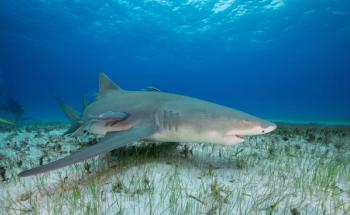
Renal tumors on ultrasonography--clinical cases (Proceedings)
For the purpose of this presentation, renal masses are defined as deforming (focal or diffuse) enlargement of the kidney with alteration of the normal renal architecture and/or shape.
For the purpose of this presentation, renal masses are defined as deforming (focal or diffuse) enlargement of the kidney with alteration of the normal renal architecture and/or shape.
Several clinical cases will be presented to illustrate the ultrasonographic appearance of some of these lesions.
Renal tumors
Renal masses are commonly encountered with renal tumors. The list of renal tumors includes carcinoma (adeno-,cystadeno-, transional cell, squamous cell), histiocytic sarcoma (malignant histiocytosis), lymphosarcoma, adenoma, nephroblastoma, smooth muscle tumors, hemangiosarcoma, metastases.
The tumors tend to have variable ultrasonographic appearance depending on the cell type, location of lesion(s) within the renal parenchyma, time of detection, and species. The lesion may be associated with cavitary/cystic component, areas of fibrosis, hemorrhage (at times, extending into the retroperitoneal space), and/or mineralization.
Renal lymphoma tends to appear as bilateral renal enlargement with heterogeneous parenchyma, at times hypoechoic nodules or masses distorting the parenchyma, and a hypoechoic subcapsular rim is often present (especially in cats).
Hemangiosarcoma tend to significantly distort part of the kidney architecture with cavitary/lacey component, and can be associated with hemorrhage dissecting caudally within the retroperitoneal space.
Any of these tumors may affect the collecting system, depending on their location and extent.
Other masses/focal renal changes
Other lesions may fall under the label of renal mass, we will consider in this category: polycystic renal disease, perirenal pseudo-cysts, cysts, abscess, granuloma.
Polycystic renal disease may present as a few to numerous anechoic cavities deforming the overall kidney shape. Most incidental solitary cysts are of no clinical significance, unless they are very large.
Perirenal pseudo-cysts are sub-capsular fluid accumulations, contributing to markedly increase the kidney size. Concurrent underlying renal disease such as end-stage kidney or infiltrative tumor should be evaluated.
Abscess can appear as an ill-defined poorly echogenic to echogenic cavity.
As there is overlap between the neoplastic group and the non-neoplastic group, it is important to perform fine needle aspirates and/or core biopsies to reach a final diagnosis.
References
Moe L, Lium B (1997) Hereditary multifocal renal cystadenocarcinomas and nodular dematofibrosis in 51 German shepherd dogs. J Small Anim Pract 38:498-505.
D'Anjou MA. Atlas of Small Animal Ultrasonography. Kidneys and Ureters. Penninck D, d'Anjou MA, eds Blackwell-Wiley(2008)
Vaden SL, Levine JF, Lees GE, Groman RP, Grauer GF, Forrester SD (2005) Renal biopsy: A retrospective study of methods and complications in 283 dogs and 65 cats. J Vet Intern Med 19:794-801.
Newsletter
From exam room tips to practice management insights, get trusted veterinary news delivered straight to your inbox—subscribe to dvm360.






